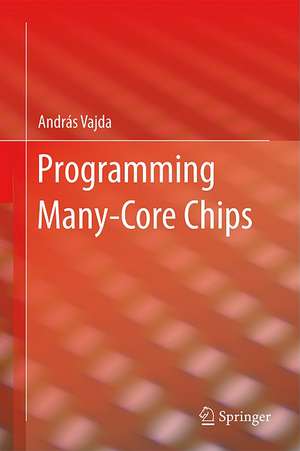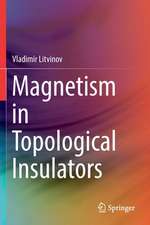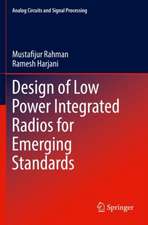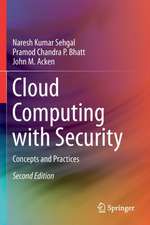Programming Many-Core Chips
Autor András Vajdaen Limba Engleză Hardback – 21 iun 2011
| Toate formatele și edițiile | Preț | Express |
|---|---|---|
| Paperback (1) | 694.22 lei 6-8 săpt. | |
| Springer Us – oct 2014 | 694.22 lei 6-8 săpt. | |
| Hardback (1) | 643.99 lei 6-8 săpt. | |
| Springer Us – 21 iun 2011 | 643.99 lei 6-8 săpt. |
Preț: 643.99 lei
Preț vechi: 757.63 lei
-15% Nou
Puncte Express: 966
Preț estimativ în valută:
123.22€ • 128.67$ • 101.76£
123.22€ • 128.67$ • 101.76£
Carte tipărită la comandă
Livrare economică 15-29 aprilie
Preluare comenzi: 021 569.72.76
Specificații
ISBN-13: 9781441997388
ISBN-10: 1441997385
Pagini: 240
Ilustrații: XII, 228 p.
Dimensiuni: 155 x 235 x 20 mm
Greutate: 0.52 kg
Ediția:2011
Editura: Springer Us
Colecția Springer
Locul publicării:New York, NY, United States
ISBN-10: 1441997385
Pagini: 240
Ilustrații: XII, 228 p.
Dimensiuni: 155 x 235 x 20 mm
Greutate: 0.52 kg
Ediția:2011
Editura: Springer Us
Colecția Springer
Locul publicării:New York, NY, United States
Public țintă
ResearchCuprins
Introduction.- Multi-core and Many-core Processor Architectures.- State of the Art Multi-core Operating Systems.- The Fundamental Laws of Parallelism.- Fundamentals of Parallel Programming.- Debugging and Performance Analysis of Many-core Programs.- Many-core Virtualization and Operating Systems.- Introduction to Programming Models.- Practical Many-core Programming.- Looking Ahead.- Index.
Textul de pe ultima copertă
Based on current technology trends, in the near future programmers will have to program chips with hundreds or even thousands of processor cores (called many-core chips). Given the scale of parallelism inherent to these chips, software designers face new challenges in terms of operating systems, middleware and applications. This book will serve as an invaluable, single-source reference to the state-of-the-art in the research and practical programming of many-core chips. It presents new concepts, techniques and programming models for dealing with the challenges posed by many-core chips. Coverage includes many-core hardware architectures, present and future operating systems design, middleware design, and the most promising programming models.
- Provides overview of various, existing homogeneous/heterogeneous processor architectures and explains why current programming models won’t scale when these architectures are scaled to meet the needs of hundreds and thousands of processor cores;
- Analyzes emerging hardware architectures and their benefits in dealing with scalability issues;
- Explains challenges and limitations faced by current operating systems and introduces novel solutions, e.g., to resource management and scheduling, illustrated through leading- edge, new operating systems designs;
- Explains basic concepts of parallel programming and the laws governing the scalability of applications;
- Explains and compares key concepts in the design of software for massively parallel systems, such as shared memory vs. message passing approaches, data vs. computation movement, as well as several emerging techniques;
- Explores the most promising programming models for many-core processors, focusing on scalability, such as the task-based model and the actor model;
- Surveys and compares the currently available programming frameworks, such as OpenMP,Threading Building Blocks and the Erlang language such as many other libraries and programming languages.
Caracteristici
Provides overview of various, existing homogeneous/heterogeneous architectures, cache and memory structures, on-chip interconnects, etc. and explains why current programming models won’t scale when these architectures are scaled to meet the needs of hundreds and thousands of processor cores Analyzes emerging hardware architectures and their benefits Explains challenges and limitations faced by current operating systems and introduces novel solutions, e.g., to resource management and scheduling Explains key concepts in many-core middleware, such as shared memory vs message passing approaches, data vs computation movement, and hint-based vs application driven assignment of tasks Explores the most promising programming models, focusing on scalability Includes supplementary material: sn.pub/extras
























